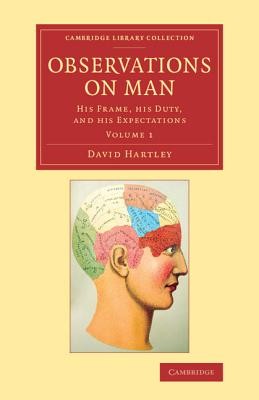
- We will send in 10–14 business days.
- Author: David Hartley
- Publisher: Cambridge University Press
- ISBN-10: 1108063624
- ISBN-13: 9781108063623
- Format: 14 x 21.6 x 3.1 cm, softcover
- Language: English
- SAVE -10% with code: EXTRA
Reviews
Description
The orphaned son of an Anglican clergyman, David Hartley (1705-57) was originally destined for holy orders. Declining to subscribe to the Thirty-Nine Articles, he turned to medicine and science yet remained a religious believer. This, his most significant work, provides a rigorous analysis of human nature, blending philosophy, psychology and theology. First published in two volumes in 1749, Observations on Man is notable for being based on the doctrine of the association of ideas. It greatly influenced scientists, theologians, social reformers and poets: Samuel Taylor Coleridge, who named his eldest son after Hartley, had his portrait painted while holding a copy. In Volume 1, Hartley utilises Newtonian science in his observations. He presents a theory of 'vibrations', explaining how the elements of the nerves and brain interact as a result of stimulation, creating 'associations' and emotions.
EXTRA 10 % discount with code: EXTRA
The promotion ends in 20d.14:38:11
The discount code is valid when purchasing from 10 €. Discounts do not stack.
- Author: David Hartley
- Publisher: Cambridge University Press
- ISBN-10: 1108063624
- ISBN-13: 9781108063623
- Format: 14 x 21.6 x 3.1 cm, softcover
- Language: English English
The orphaned son of an Anglican clergyman, David Hartley (1705-57) was originally destined for holy orders. Declining to subscribe to the Thirty-Nine Articles, he turned to medicine and science yet remained a religious believer. This, his most significant work, provides a rigorous analysis of human nature, blending philosophy, psychology and theology. First published in two volumes in 1749, Observations on Man is notable for being based on the doctrine of the association of ideas. It greatly influenced scientists, theologians, social reformers and poets: Samuel Taylor Coleridge, who named his eldest son after Hartley, had his portrait painted while holding a copy. In Volume 1, Hartley utilises Newtonian science in his observations. He presents a theory of 'vibrations', explaining how the elements of the nerves and brain interact as a result of stimulation, creating 'associations' and emotions.


Reviews